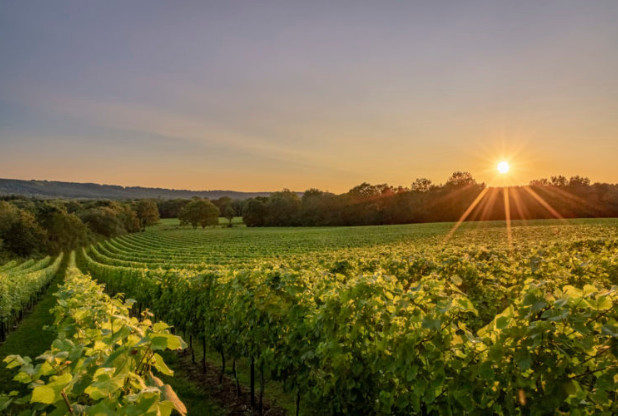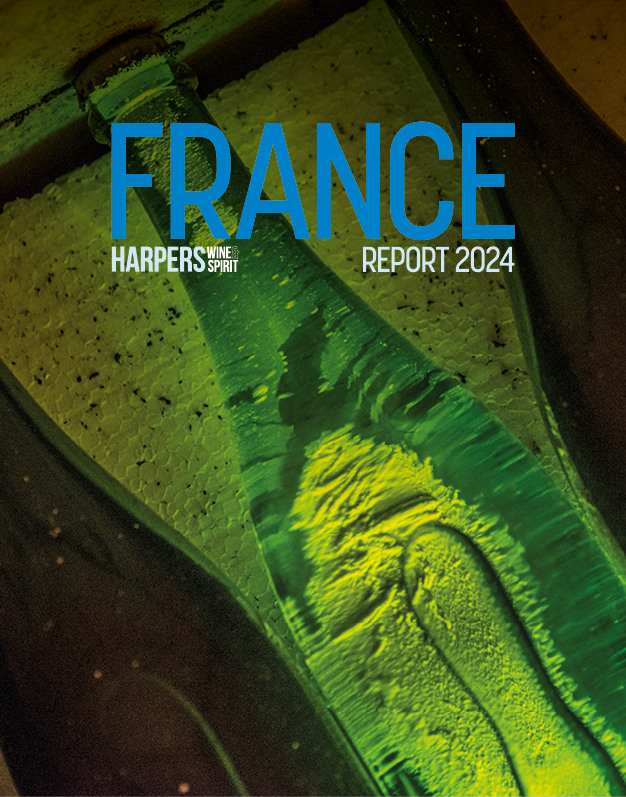
Sales and temperatures rise in tandem for UK wine industry
Much has been made of the growth of the UK wine sector and how climate change is slowly emerging as a net benefit for vineyards across the country.
According to WineGB figures, there are now 3,758 hectares under vine in England and Wales, with 879 vineyards and 197 wineries (195 in England, two in Wales).
In addition, hectarage has more than doubled in just eight years and quadrupled since the turn of the millennium.
This increase in plantings has coincided with the UK’s ten warmest years on record, which have all occurred since 2002.
Heatwaves like those experienced in 2018 have contributed to record UK average yields of 48 hectolitres per hectare. It remains to be seen what kind of yields the scorching temperatures of 2022 will bring, but the early signs are positive.
In fact, the 2022 harvest is already underway for some UK vineyards.
Charlie Morgan of Chapel Down Wines said: “It is our earliest harvest ever, by roughly a week, and the yields are looking very big, though we don’t want to count our chickens before they’ve hatched. The gorgeous summer is so far having a positive effect on our 2022 vintage.”
Zoë Driver, assistant winemaker at Black Chalk Wine, added: “Our harvest won’t start till October, but the yields are definitely up this year, and, thankfully, we haven’t suffered any drought. Some grapes suffered a little sun damage, but overall, things look very healthy.”
Mardi Roberts, marketing and communications director at Ridgeview Wine Estate, commented: “Some of our vines are the oldest in the country, around 27 years old, so they have deep-rooted roots, which has helped against potential drought. We are hoping the heat will also contribute to a slightly more vibrant and intensely flavoured grape.
All the signs point towards a fruitful 2022 vintage, but how well is the UK market positioned to profit from this?
In 2021, for the first time, sales of UK wine was higher than production, with 9.3 million bottles sold compared to 8.9 million produced.
Furthermore, WineGB’s annual survey shows a rise of 31% in year-on-year sales in 2021 and an overall rise of 69% from 2019 to 2022.
Another trend that will please producers is the rise of the direct-to-consumer channel, which has received the most growth over the last two years (265%) and now represents 57% of all sales in 2021 (up from 36% in 2019).
With so much optimism in the air, it’s vital to safeguard the UK wine industry via PDO/PGI schemes.
Simon Thorpe MW, CEO of WineGB, said: “We need to ensure these schemes are fit for purpose for a modern, quality-focused and innovative production. We must have a scheme which protects and informs the consumer whilst equally adding value to producers.
“We also continue our drive on sustainability, wine tourism, exports, product excellence and industry leadership. As a result, the past 12 months have delivered a stronger and fitter wine production sector, one which is in a more robust place to confront the challenging economic times in which we live.”
Meanwhile, the Sustainable Wines of Great Britain (SWGB) scheme continues to grow, with 83 members covering 77 of the country’s vineyards, which accounts for around 55% of the total hectarage under vine.
In the next three years, WineGB hopes to increase this to as much of production as possible, ensuring that wine consumers understand how resources are being protected.
Today there are 35 fully accredited wines released which can bear the SWGB label.
Climate change may have presented some short-term benefits to the UK wine industry. Still, businesses across the country must take responsibility and ensure that emissions from grape to glass are reduced as much as possible.






